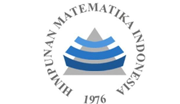Using an LSTM Neural Network to Improve Symmetric and Asymmetric GARCH Volatility Forecast
Abstract
Volatility forecasting is crucial for financial risk management, yet traditional models like GARCH struggle with nonlinearities and asymmetric effects. This study leverages Long Short-Term Memory (LSTM) neural networks to enhance symmetric and asymmetric GARCH models, addressing these limitations. By integrating LSTM with GARCH, GARCH-X, and Realized GARCH frameworks, we propose hybrid models (Baseline and Extended versions) to improve forecasting accuracy. Using daily data from FTSE 100, Nikkei 225, and S&P 500 indices (2000–2020), we compared hybrid models against traditional models. Results show that the Extended LSTM hybrid model outperforms both traditional GARCH-type models and the Baseline LSTM, capturing complex volatility patterns more effectively. The Extended model’s architecture, featuring ReLU, GRU, and dropout layers, mitigates over-smoothing and enhances responsiveness to market fluctuations. This research demonstrates LSTM’s potential to refine volatility forecasting, offering valuable insights for investors and risk managers.
Keywords
Full Text:
PDFReferences
T. Bollerslev, “The story of GARCH: A personal odyssey,” J Econom, vol. 234, pp. 96–100, 2023, doi: 10.1016/J.JECONOM.2023.01.015.
D. B. Nugroho, J. Wijaya, and A. Setiawan, “Modeling of returns volatility through EGARCH model using high-frequency data,” J Appl Probab Stat, vol. 18, no. 2, pp. 55–73, 2023.
D. B. Nugroho, L. P. Panjaitan, D. Kurniawati, Z. Kholil, B. Susanto, and L. R. Sasongko, “GRG non-linear and ARWM methods for estimating the GARCH-M, GJR, and log-GARCH models,” Jurnal Teori Apl Mat, vol. 6, no. 2, pp. 448–460, 2022, doi: 10.31764/jtam.v6i2.7694.
D. B. Nugroho, H. Wibowo, and A. Saragih, “Modeling daily return volatility through GJR(1,1) model and realized volatility measure,” Thail Stat, vol. 22, no. 1, pp. 50–62, 2024, [Online]. Available: https://ph02.tci-thaijo.org/index.php/thaistat/article/view/252221
D. B. Nugroho, B. A. A. Wicaksono, and L. Larwuy, “GARCH-X(1,1) model allowing a non-linear function of the variance to follow an AR(1) process,” Commun Stat Appl Methods, vol. 30, no. 2, pp. 163–178, 2023, doi: 10.29220/CSAM.2023.30.2.163.
D. B. Nugroho, O. C. Dimitrio, and F. Tita, “The GARCH-X(1,1) model with exponentially transformed exogenous variables,” J Sains Teknol, vol. 12, no. 1, pp. 65–72, 2023, doi: 10.23887/jstundiksha.v12i1.50714.
D. B. Nugroho, M. T. Wijaya, and H. A. Parhusip, “Modeling and estimating GARCH-X and Realized GARCH using ARWM and GRG methods,” Int J Comput Sci Appl Math, vol. 11, no. 1, pp. 14–20, 2025, doi: 10.12962/J24775401.V11I1.20333.
A. Moghar and M. Hamiche, “Stock market prediction using LSTM Recurrent Neural Network,” Procedia Comput Sci, vol. 170, pp. 1168–1173, 2020, doi: 10.1016/J.PROCS.2020.03.049.
R. Qiao, W. Chen, and Y. Qiao, “Prediction of stock return by LSTM neural network,” Appl Artif Intell, vol. 36, no. 1, p. 2151159, 2022, doi: 10.1080/08839514.2022.2151159.
K. Kakade, I. Jain, and A. K. Mishra, “Value-at-Risk forecasting: A hybrid ensemble learning GARCH-LSTM based approach,” Resour Policy, vol. 78, p. 102903, 2022, doi: 10.1016/J.RESOURPOL.2022.102903.
H. T. Araya, J. Aduda, and T. Berhane, “A hybrid GARCH and deep learning method for volatility prediction,” J Appl Math, vol. 2024, no. 1, p. 6305525, 2024, doi: 10.1155/2024/6305525.
J. C. Sullivan, “Stock price volatility prediction with long short-term memory neural networks,” in Comput Sci, 2019.
D. S. Kambouroudis, D. G. McMillan, and K. Tsakou, “Forecasting realized volatility: The role of implied volatility, leverage effect, overnight returns, and volatility of realized volatility,” J Futures Mark, vol. 41, no. 10, pp. 1618–1639, 2021, doi: 10.1002/FUT.22241.
E. S. Gunnarsson, H. R. Isern, A. Kaloudis, M. Risstad, B. Vigdel, and S. Westgaard, “Prediction of realized volatility and implied volatility indices using AI and machine learning: A review,” Int Rev Financ Anal, vol. 93, p. 103221, 2024, doi: 10.1016/J.IRFA.2024.103221.
X. Wu, J. Pu, and Y. Wang, “Forecasting VIX using realized EGARCH model with dynamic jumps,” Appl Econ Lett, 2024, doi: 10.1080/13504851.2024.2308565.
R. Gerlach, A. Naimoli, and G. Storti, “Time-varying parameters realized GARCH models for tracking attenuation bias in volatility dynamics,” Quant Financ, vol. 20, no. 11, pp. 1849–1878, 2020, doi: 10.1080/14697688.2020.1751257.
R. G. S. Queiroz and S. A. David, “Performance of the Realized-GARCH Model against other GARCH Types in predicting cryptocurrency volatility,” Risks, vol. 11, no. 211, 2023, doi: 10.3390/risks11120211.
P. R. Hansen and Z. Huang, “Exponential GARCH Modeling with Realized Measures of Volatility,” J Bus Econ Stat, 2016, doi: 10.1080/07350015.2015.1038543
A. Naimoli, R. Gerlach, and G. Storti, “Improving the accuracy of tail risk forecasting models by combining several realized volatility estimators,” Econ Model, vol. 107, p. 105701, 2022, doi: 10.1016/J.ECONMOD.2021.105701.
H. Xie and C. Yu, “Realized GARCH models: Simpler is better,” Financ Res Lett, vol. 33, p. 101221, 2020, doi: 10.1016/J.FRL.2019.06.019.
D. A. Spade, “Markov chain Monte Carlo methods: Theory and practice,” Handb Stat, vol. 43, pp. 1–66, 2020, doi: 10.1016/BS.HOST.2019.06.001.
L. Ni et al., “Streamflow and rainfall forecasting by two long short-term memory-based models,” J Hydrol (Amst), vol. 583, p. 124296, 2020, doi: 10.1016/J.JHYDROL.2019.124296.
H. Alizadegan, B. R. Malki, A. Radmehr, H. Karimi, and M. A. Ilani, “Comparative study of long short-term memory (LSTM), bidirectional LSTM, and traditional machine learning approaches for energy consumption prediction,” Energ Explor Exploit, vol. 43, no. 1, pp. 281–301, 2025, doi: 10.1177/01445987241269496.
N. P. Dharani, “Analysis and prediction of COVID-19 by using recurrent LSTM neural network model in machine learning,” Int J Adv Comput Sci Appl, vol. 13, no. 5, pp. 171–178, 2022.
C. H. Kim and Y. C. Kim, “Application of artificial neural network over nickel-based catalyst for Combined Steam-Carbon Dioxide of Methane Reforming (CSDRM),” J Nanosci Nanotechnol, vol. 20, no. 9, pp. 5716–5719, 2020, doi: 10.1166/JNN.2020.17627.
Y. Lyu, Z. Yang, Y. Luo, Z. Qin, H. Yi, and R. Ke, “Forecasting the volatility of crude oil futures market: Does the simple 5-minute RV hold up?,” Energy Econ, vol. 146, p. 108509, 2025, doi: 10.1016/J.ENECO.2025.108509.
C. Floros, K. Gkillas, C. Konstantatos, and A. Tsagkanos, “Realized measures to explain volatility changes over time,” J Risk Financ Manag, vol. 13, no. 6, p. 125, 2020, doi: 10.3390/jrfm13060125.
DOI: http://dx.doi.org/10.30829/zero.v9i1.24614
Refbacks
- There are currently no refbacks.

This work is licensed under a Creative Commons Attribution-ShareAlike 4.0 International License.
Publisher : Department of Mathematics Faculty of Science and Technology Universitas Islam Negeri Sumatera Utara Medan | |
✉️ Email: zero_journal@uinsu.ac.id 📱 WhatsApp:085270009767 (Admin Official) | |
 |  |  |  |  |



